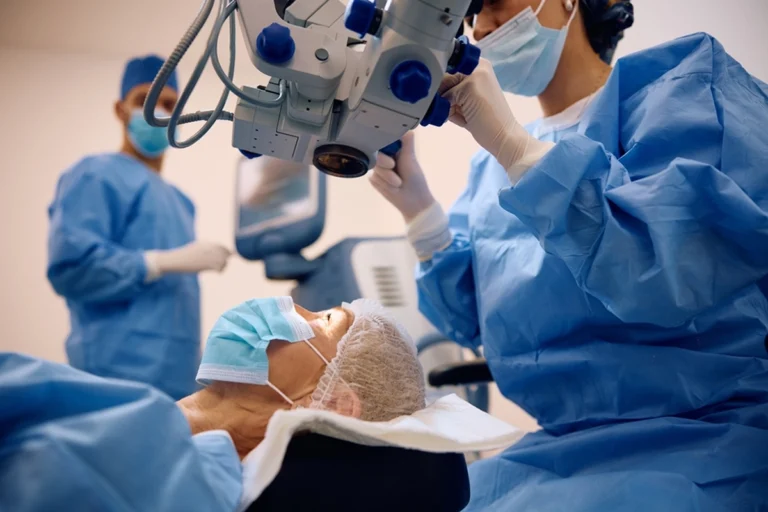Types of Cataract Surgery Explained Which one is Right for You?

Major countries around the world advocating vision impairment and blindness include cataract. With reduced clarity and patches of opacity setting in the natural lens of the human eye, cataracts typically enter life in old age, more so with advancing years after 60. But there are cases of younger patients. However, due to the quick recovery and safety guaranteed, cataract surgery is far more common, with millions treated every year and leading to restoration of clear vision.
Beyond the various kinds of cataract surgery, advances in modern technology further lead patients, questioning: which cataract surgery is best? Here’s a guide to all cataract treatment options, the primary surgical procedures, and making an informed decision.
Understanding Cataracts and Why Surgery is Needed
Cataracts evolve slowly, and symptoms may include blurry vision, glare, faded colours, or difficulty seeing at night. Cataract surgery is the only curative procedure when the sight cannot be refracted by spectacles—whereby the cloudy lens is removed and replaced by a clear artificial lens called an intraocular lens (IOL).
What is Cataract Surgery?
Classic cataract surgery is the removal of the cataractous lens followed by insertion of an intraocular lens to restore and often increase the visual acuity. Theoretically, the goal of real-life cataract surgery is crystal-clear sight; however, types of cataract surgery are basically different in their technology and approach. Understanding the differences between them becomes an important factor when choosing the right cataract surgery for yourself.
Types of Cataract Surgery: A Detailed Overview
- Traditional Cataract Surgery (Phacoemulsification)
Also referred to as the “conventional standard of care” among cataract treatments, this procedure consists of:
- Incision in the cornea, a few millimeters long, which is done with a surgical blade.
- Possessing an ultrasound probe to break down the cataract with phacoemulsification.
- Suctioning away the pieces and implanting a pre-folded IOL.
Traditional cataract surgery enjoys a near-perfect safety record and is appropriate for the majority of patients.
2. Bladeless Cataract Surgery (Femtosecond Laser-Assisted Cataract Surgery, FLACS)
Being a method of modern cataract surgery methods, bladeless cataract surgery utilizes computer-guided femtosecond lasers for: - Ultra-precise corneal incisions
- Lasering the lens for easy and gentle removal
- Custom correction of astigmatism
This surgery is mostly advertised as the best cataract surgery due to its precision, customization, and adding healing benefits.
3. Extracapsular Cataract Extraction (ECCE)
Almost not done these days, ECCE is usually called upon for the densest cataracts:
- A bigger incision allows removal of the lens as a single piece.
- The IOL is implanted, and sutures are required.
Though modern surgeries favor less invasive techniques, ECCE is still useful in particular situations
4. Intracapsular Cataract Extraction (ICCE)
ICCE, a now-extinct technique, includes:
- A large incision to excise the entire lens with its capsule.
- Placing the IOL in the anterior chamber of the eye.
Due to the higher risk and longer recuperation period, now it is considered only in very complicated cases
Traditional vs Laser Cataract Surgery:
A Practical Comparison
Patients often wonder about the key differences between traditional vs laser cataract surgery. Here’s how they compare
| Factor | Traditional Method (Phacoemulsification) | Bladeless/Laser Method (FLACS) |
| Incision | Manual blade | Computer-guided laser (bladeless) |
| Lens Fragmentation | Ultrasound | Laser softens and pre-fragments lens |
| Astigmatism | Limited correction | Superior, precise correction |
| Customization | Surgeon-dependent | High customization via imaging/software |
| Recovery | Fast | Equal or faster (minimal trauma) |
| Cost | More affordable | Higher; not always insurance-covered |
| Suitability | Most patients | Best for complex eyes, astigmatism, or premium IOLs |
Both cataract surgeries are effective, with the choice depending on patient needs, anatomy of the eye, and budget.
Advanced Cataract Surgery Techniques & Innovations
Other than the two main types of cataract surgery, we have advanced cataract surgery techniques that improve outcomes:
- Premium IOLs (toric, multifocal, or accommodating) for giving the eye refractive correction to reduce dependence on glasses.
- Smaller micro-incisions for faster healing and less risk.
- New lens technology and AI planning will quickly extend the range of cataract treatment options.
How to Make the Best Choice: Key Criteria
Which cataract surgery is best for your situation? Consider the following:
- Eye Anatomy and Health: Some eye structures put constraints on the methods to be employed.
- Lifestyle and Vision Goals: Want to ditch the spectacles? Is astigmatism correction an option? Then Premium IOLs should be your choice.
- Budget and Insurance: Many of the advanced cataract surgery techniques do demand extra cost.
- The Expertise of Your Surgeon: Rely upon him or her to offer thoughtful advice for the best outcomes—they are your best guide.
Always go through these considerations with your ophthalmologist to make sure that you are choosing the right cataract surgery for yourself
Innovations and the Future
The future of cataract surgery is promising:
- Ultra-small incisions (nearly suture-free)
- Sharper, more flexible lenses
- AI and imaging to individualize every step
Modern-day cataract surgeries present patients with even greater safety and vision restoration capabilities.
Conclusion: Your Vision, Your Decision
There isn’t one set way to perform best cataract surgery for everyone; it depends on your eyes, your life, and your aims. There are today so many options to treat a cataract with—from bladeless cataract surgery and advanced IOLs to surgeon expertise—that allow you to determine your own path toward clear vision.
By going through different types of cataract surgery and considering modern cataract surgery methods, you become a partner in deciding what is best for you with your ophthalmologist. Ask a lot of questions, compare your options, and make decisions informed of all your choices so you may enjoy clear vision and a wonderful life after surgery.
